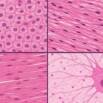
[100% Off] Mastering Histology: Microscopic Anatomy Made Easy
Explore the Structure and Function of Human Tissues — From Cells to Systems — with Real Slide Images, Expert Lessons,
What you’ll learn
- types of tissues
- cardiovascular histology
- respiratory histology
- endocrine histology
- reproductive histology
- urinary histology
- lymphoid histology
- gastrointestinal histology
- sensory histology
Requirements
- interest in medical sciences
- some previous kowlege about medical terms
Description
Histology — also known as microscopic anatomy — is the fascinating study of tissues at the cellular level. This course offers a comprehensive and visually engaging exploration of the microanatomy of the human body.
You’ll learn to recognize and differentiate the four fundamental tissue types: epithelial, connective, muscle, and nervous tissue, and understand how each plays a vital role in organ structure and function.
Through real-life slide images and expertly guided lessons, we’ll walk you through:
-
The structure and classification of epithelial tissue (simple, stratified, transitional, glandular)
-
The characteristics and functions of smooth, skeletal, and cardiac muscle
-
The supportive role of connective tissues — from bone and cartilage to blood
-
The organization and function of neurons, glia, and sensory receptors in nervous tissue
You’ll also master key histological techniques:
-
Tissue Preparation: Fixation, dehydration, embedding, sectioning, and antigen retrieval
-
Staining Methods: Learn how Hematoxylin & Eosin (H&E) and specialized stains reveal hidden cellular details
-
Immunohistochemistry: Understand how antigens are revealed and detected using antibodies
Whether you’re a medical student, a lab technician, or simply passionate about microscopic anatomy, this course is your gateway to visualizing and understanding the body like never before.
By the end of this course, you’ll be able to:
-
Identify and describe all major tissue types on stained slides
-
Understand tissue structure-function relationships
-
Apply key histological preparation and staining techniques
-
Recognize pathological changes in tissues with basic histopathology principles








